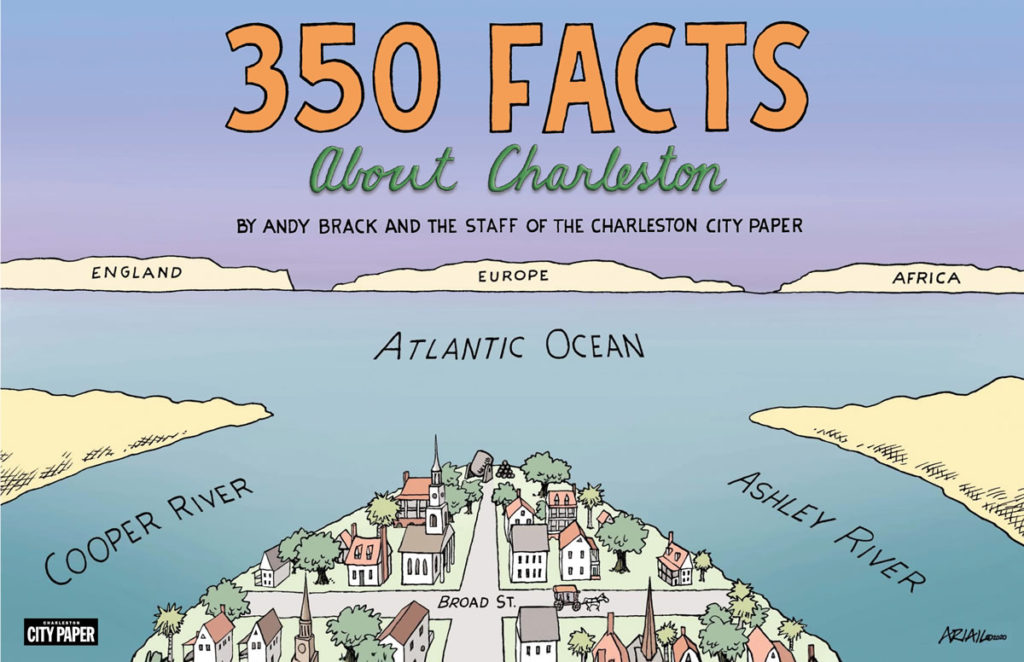 With this issue, we begin publishing excerpts from a soon-to-be-published book, 350 Facts About Charleston. As you may know, the Holy City is celebrating the 350th anniversary of its founding this year. The staff at our sister publication, the Charleston City Paper, compiled lots of interesting facts that we think you’ll find entertaining and compelling.
With this issue, we begin publishing excerpts from a soon-to-be-published book, 350 Facts About Charleston. As you may know, the Holy City is celebrating the 350th anniversary of its founding this year. The staff at our sister publication, the Charleston City Paper, compiled lots of interesting facts that we think you’ll find entertaining and compelling.
The new book comes out in mid-September. Pre-order a copy today.
Here are three factual snippets from the new book:
Birthplace of American golf. Golf in America got its start in 1786 in Charleston with the formation of the South Carolina Golf Club, whose members reportedly played on a bustling rectangle of land that stretched between what we know as Charleston and Beaufain streets and bounded by Rutledge and Barre streets. The area, called Harleston Green, seemed to disappear from historical records as a golf course around 1800. But that makes sense: Around that time, homes started being built in the area. Interesting tidbit: Some 432 golf balls and 96 clubs arrived in Charleston from England in 1743 as the first known shipment of golf equipment into the colonies.
S.C. educator was first Black man elected statewide in U.S. Francis Lewis Cardozo (1836-1903), born free in Charleston, founded the Avery Normal Institute in 1865. It was the first accredited secondary school for African Americans in Charleston. Today, its successor, the Avery Institute, is part of the College of Charleston. Cardozo also offered a big political first: He was elected S.C. secretary of state in 1868, becoming the first African American to hold a statewide office in the United States. He advocated for integrated public schools, which was supported by the legislature at the time. He resigned his seat to teach Latin at Howard University, but returned to South Carolina politics in 1872 and was elected state treasurer, serving until 1877 when the federal government began to remove federal troops that protected Black participation in politics and daily life. In 1878, Cardozo was appointed to the Treasury Department in Washington, D.C., later becoming principal of the Washington, D.C., Colored High School. He lived in the nation’s capital until his death in 1903.
Birthplace of fire insurance. The first fire insurance company in America was organized in February 1736 in Charleston with the formation of the Friendly Society for the Mutual Insuring of Houses Against Fire. According to an article from 1893, “John Fenwicke, Samuel Wragg and Charles Pinckney were chosen directors; John Crokat and Henry Peronneau, merchants, secretaries; Gabriel Manigault, treasurer; Gerelt Van Velesen and John Laurens, firemasters.” The company, however, “ceased business some six years later after its inception, as a result of a fire involving $1,250,000 of insurance, which was a very large sum in those times.” Reportedly, more than 300 buildings were destroyed in the Great Fire of 1740.


